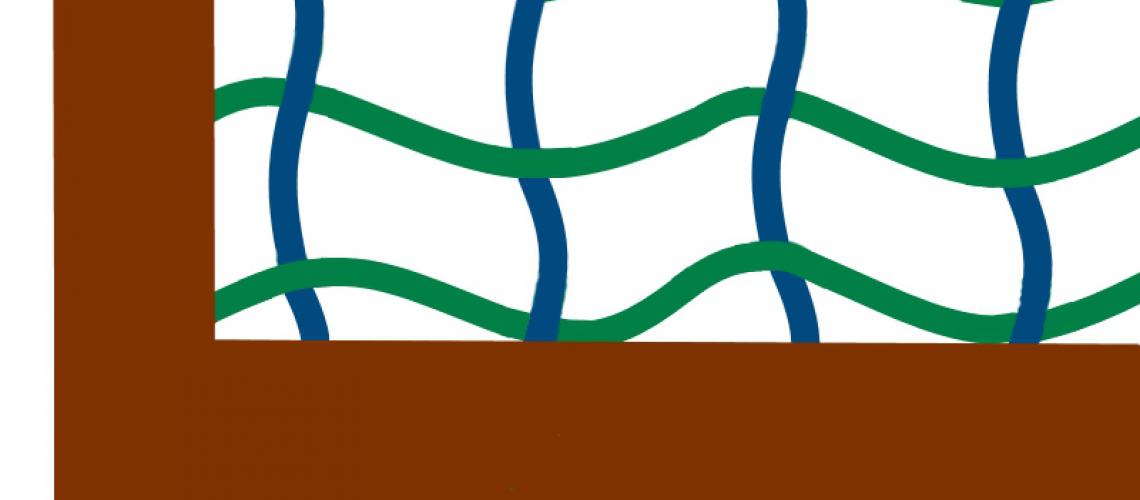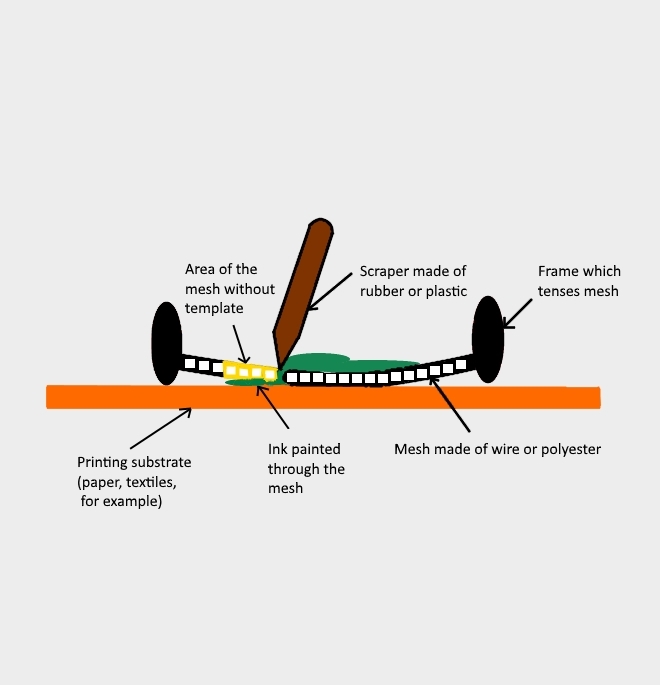It is a printing process in which the ink is forced through a mesh, also known as through-printing, stencil printing or silk-screen printing.
By means of templates, the areas of the mesh are covered, through which no color is to penetrate, i.e. the corresponding parts, which should remain unprinted. Instead of the templates, photographic processes can also be used:
After it has been degreased and cleaned, the mesh may be coated in advance with photosensitive photo-emulsion. Otherwise the emulsion will not adhere. This reacts to ultraviolet light. When an exposure filter (for example, a slightly milky foil, containing the motive to be printed with sharp edges, usually in black) is placed on the coated mesh and irradiated, the photo-emulsion hardens in the areas around the subject. These areas are impervious to the ink. After removing the exposure filter, the photo-emulsion must be flushed out with water so that the screen can be penetrated by ink. The motive can now be easily transferred to the printing substrate. The printing substrate is the material that is printed. An advantage of screen printing is a wide variety of materials which can be printed: Textiles (clothing, fabrics) and glass, ceramics, foils, paper, wood or metal (sheet metal). [1,2] It offers also the possibility of multi-color printing.
The screen is clamped in a frame. It can be made of polyester, textile or wire. There are different degrees of fineness of tissues. The denser the fabric, the more threads are included, the less color penetrates. For coarser work so a fabric with fewer threads should be used.
The screen is fixed over the printing substrate and covered with paint. This is then painted through the mesh with the scraper (rubber or plastic scraper) and transferred to the printing substrate. The scraper is also called squeegee and can also be a coating knife. [2,3]
Subsequently, the drying takes place.
Screen printing has been in use since about 1940. Due to its wide range of applications, it is mainly used for advertising purposes or other artistic projects.
References
[1] Zender, Joachim Elias: Lexikon Buch, Druck, Papier, 2008.
[2] Screen printing (German):
https://de.wikipedia.org/wiki/Siebdruck
[3] Scraper (German):
https://de.wikipedia.org/wiki/Rakel



